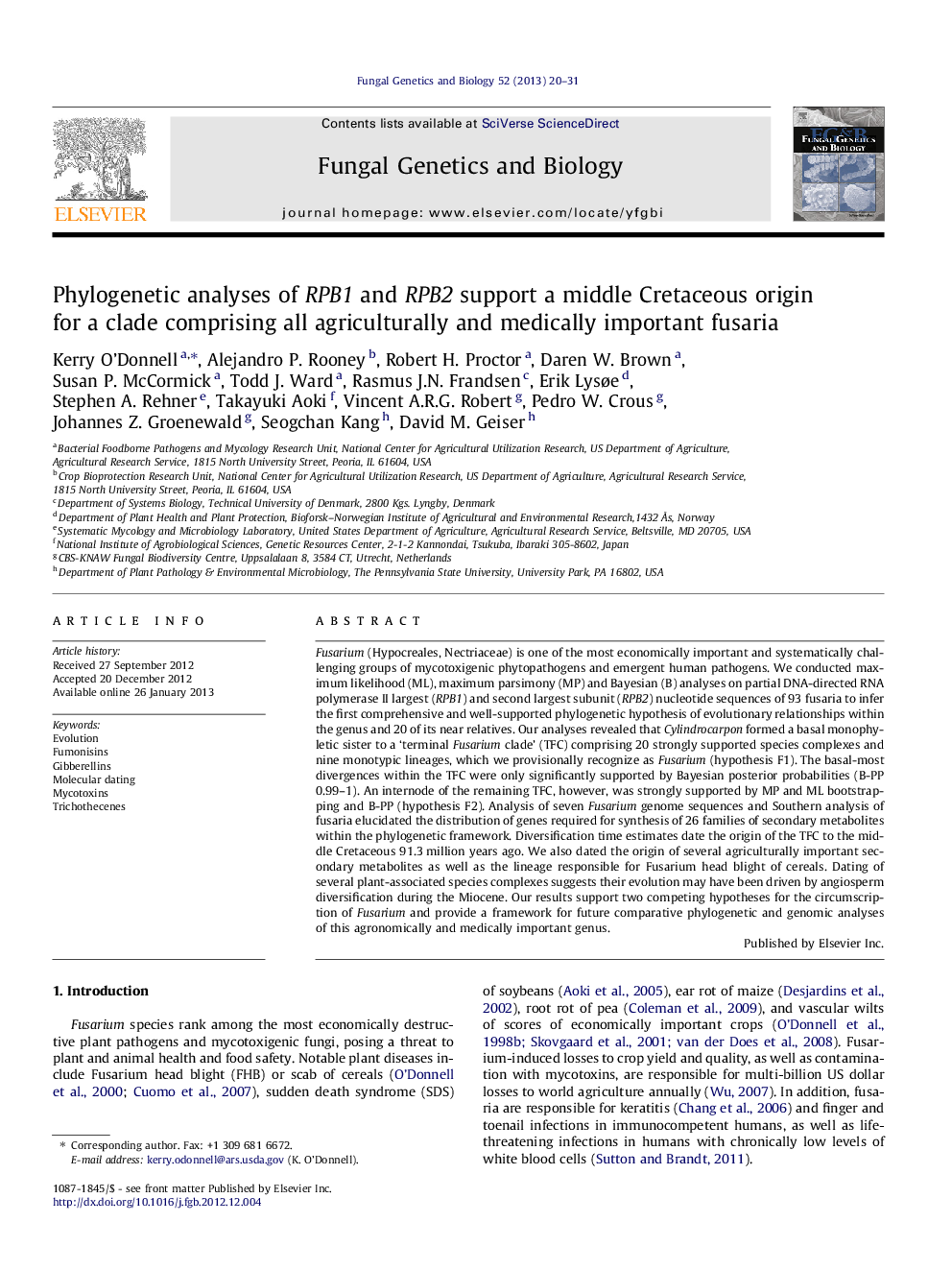| کد مقاله | کد نشریه | سال انتشار | مقاله انگلیسی | نسخه تمام متن |
|---|---|---|---|---|
| 2180874 | 1550038 | 2013 | 12 صفحه PDF | دانلود رایگان |

Fusarium (Hypocreales, Nectriaceae) is one of the most economically important and systematically challenging groups of mycotoxigenic phytopathogens and emergent human pathogens. We conducted maximum likelihood (ML), maximum parsimony (MP) and Bayesian (B) analyses on partial DNA-directed RNA polymerase II largest (RPB1) and second largest subunit (RPB2) nucleotide sequences of 93 fusaria to infer the first comprehensive and well-supported phylogenetic hypothesis of evolutionary relationships within the genus and 20 of its near relatives. Our analyses revealed that Cylindrocarpon formed a basal monophyletic sister to a ‘terminal Fusarium clade’ (TFC) comprising 20 strongly supported species complexes and nine monotypic lineages, which we provisionally recognize as Fusarium (hypothesis F1). The basal-most divergences within the TFC were only significantly supported by Bayesian posterior probabilities (B-PP 0.99–1). An internode of the remaining TFC, however, was strongly supported by MP and ML bootstrapping and B-PP (hypothesis F2). Analysis of seven Fusarium genome sequences and Southern analysis of fusaria elucidated the distribution of genes required for synthesis of 26 families of secondary metabolites within the phylogenetic framework. Diversification time estimates date the origin of the TFC to the middle Cretaceous 91.3 million years ago. We also dated the origin of several agriculturally important secondary metabolites as well as the lineage responsible for Fusarium head blight of cereals. Dating of several plant-associated species complexes suggests their evolution may have been driven by angiosperm diversification during the Miocene. Our results support two competing hypotheses for the circumscription of Fusarium and provide a framework for future comparative phylogenetic and genomic analyses of this agronomically and medically important genus.
► Phylogenetic analyses of RPB1 and RPB2 sequences support Fusarium monophyly.
► We resolved 20 monophyletic species complexes and nine monotypic lineages.
► Dating places the origin of Fusarium in the middle Cretaceous 91.3 million years ago.
► Fusarium graminearum and related cereal head blight pathogens radiated in the Pleistocene.
► We dated the origin of trichothecenes, fumonisins and fusarin mycotoxins in Fusarium.
Journal: Fungal Genetics and Biology - Volume 52, March 2013, Pages 20–31